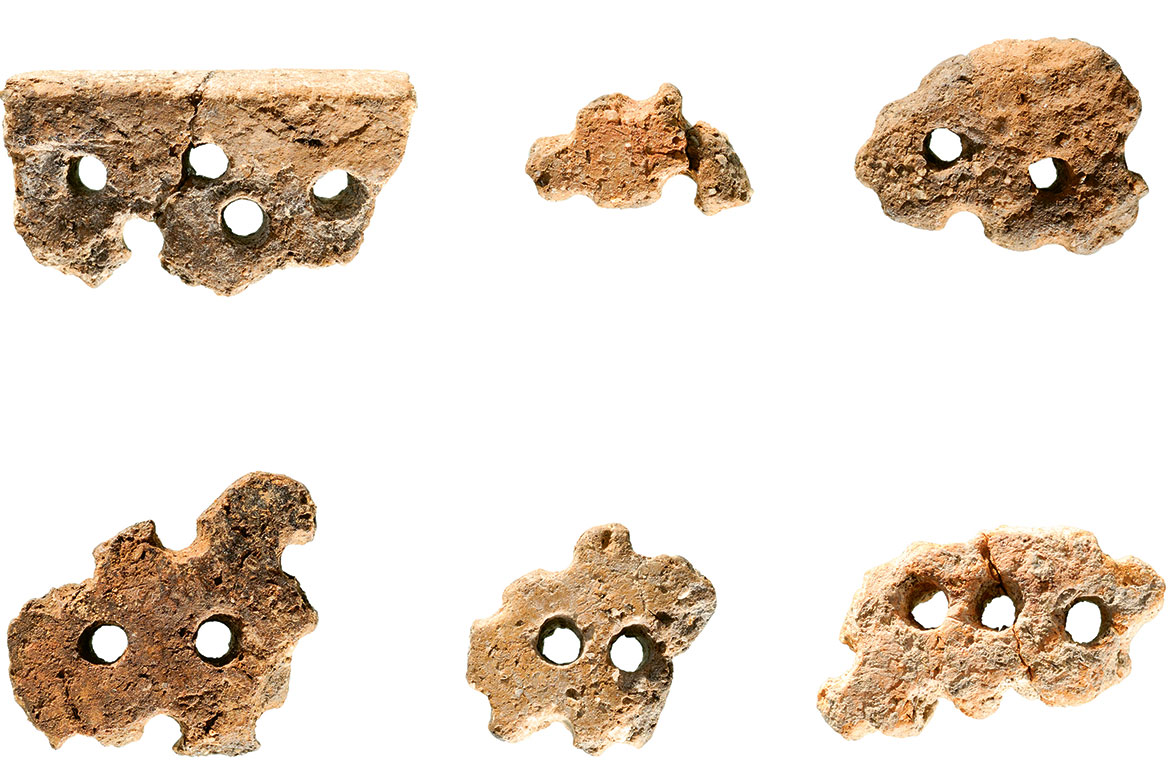Tracing the evolution of prehistoric livestock in the Alps through 20,000 bones
Neolithic breeders already knew the advantages of combining sheep and goat husbandry, according to the work of a Geneva archaeozoologist.

These clay fragments of small drip bowls are proof of Stone-Age cheese production in Savoy. | Image: Cyril Bernard, AVDPA.
More than 7,000 years ago, the first agro-pastoral communities settled in the Alps. They brought with them Neolithic culture: animal domestication, agriculture, and polished pottery and stone. To trace the development of their livestock practices, the archaeozoologist Patricia Chiquet of the Natural History Museum of Geneva has examined more than 20,000 animal bones and teeth found near Sion (Valais), Isère and Savoy (France).
Among her discoveries is a whistle fashioned from the tibia of a Caprinae (the subfamily of goats, sheep and chamois), probably used as an instrument for communicating. She was able to show, above all, that animal husbandry had gradually become more diversified. “It was primarily focused on sheep for the production of meat and milk. But towards the end of the Neolithic period between 3500 and 2200 BC, goat, beef and pig farming progressed”. Farmers had already seen the value of holding stocks of different species: “Sheep and goats are complementary. Sheep like grassy surfaces but not too steep or bushy. Goats, on the other hand, can not only subsist on this latter type of terrain but they also prevent it from overgrowing, so there was clearly an interest in keeping them too”.
Did Neolithic humans discover the Alpine pastures? “Given that the ancestors of our sheep and goats are from the Near East, we can be sure that these herds crossed Alpine passes before settling in Valais. But the same can’t be said as to whether they moved up every summer to enjoy the seasonal fresh grass”. Tests on the remains of teeth are underway, however, and we will see the first results later this year.




